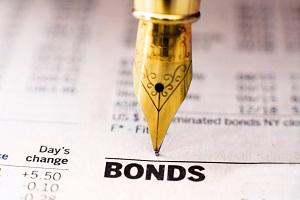
Understanding the Sources of Bond Returns
Given their current low yields and exposure to potential increases in interest rates, investors may question the utility of including bonds in their portfolios. The questioning becomes especially strong when we experience days where both stocks and bonds lose value. We at Clarity Capital Advisors believe that bonds can continue to provide diversification against equity risk and preservation of capital to our client’s portfolios.
Investors should understand the primary sources of returns in the bond portion of their portfolio. The first and most immediately obvious source is the coupon payments which tend to be fixed for the life of the bond. Hence the name, fixed income.
The second source is the one we most often hear about in the news, changes in interest rates. Recall that bond prices and interest rates have an inverse relationship. To understand why, think about a bond with a 4% coupon. If interest rates were to increase, and newly issued bonds now carry a 5% coupon, the 4% bonds have clearly suffered a loss of value. The longer the maturity of the bond, the greater the loss of value that will occur. The measure known as “duration” quantifies the relationship between interest rate changes and bond prices. For example, the Vanguard Long-Term Treasury Fund (VUSUX) has a duration of about 18. On Friday (2/26/2021), Interest rates decreased by about 0.17% at that maturity level which means we would have expected the net asset value of this fund to increase by a little over 3% (18 times 0.17%), which it did. Always remember that the higher the price you pay for a bond, the lower the bond’s yield to maturity will be, and vice versa.
The third source is a little difficult to understand, and it derives from holding bonds as they roll down the yield curve. For example, suppose a bond that matures in five years (with no coupons) is priced to yield 4%, and a similar bond (say from the same issuer) that matures in four years yields 3.5%. The return received from buying the 5-year bond and holding it for one year (assuming no changes in interest rates) would be a little over 6% rather than 4%. Well managed bond funds take advantage of the roll-down return to increase returns for shareholders, which means they may have much higher turnover compared to equity funds.
At this point, we should consider the relationship between stock returns and bond returns. This is a highly complex topic to say the least. Indeed, what we are really asking about is the impact of interest rate changes on stock prices. Given that stock prices represent the discounted future profits of companies, an increase in interest rates should cause a decrease in stock prices because the future profits will now be discounted at higher interest rates. Furthermore, companies whose future profits are further out than average (i.e., growth companies) would take a larger hit. This would partially explain why growth companies have done so much better than value companies during the past decade when interest rates have decreased.
While we have been focused on the denominator of the price calculation (i.e., discount rates), we must not neglect the numerator (future profits). Sometimes an increase in interest rates is attributable to an expected increase in economic activity, and investors become more optimistic about the prospects for future profits to the point where the additional expected profits overwhelm the increase in the discount rate. As we said, it is complicated and completely unpredictable.
If you would like to discuss this or any investment-related topic with us, please do not hesitate to reach out.

